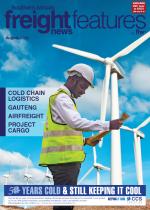Gauteng needs a holistic logistics solution if it is to overcome its geographical disadvantage – the province’s distance from any seaport, be it Maputo or Durban.“Considering the distance between Gauteng and any seaport, and the fact that we are already a long-haul destination, far from other markets, it is imperative that we do logistics better than other countries,” says Professor Rose Luke from the University of Johannesburg’s department of transport and supply chain management. “Improving our corridors to the various seaports is necessary as we are already at capacity and the system is struggling to cope as it is.”With the province intent on boosting its manufacturing capacity and increasing exports, the corridors to and from the coast will only be put under more strain as capacity is exceeded.“To date, long-distance rail has not come to the party, resulting in a system that is weak. The province does not need a reputable rail service provider, but rather, a reputable logistics system incorporating multi-modes of transport that deliver efficiency to the end-user.”With the rail system unreliable, most shippers rely on road freight, leaving the province facing a twin evil – environmental harm and congestion.Furthermore, road infrastructure remains a challenge in the province, with trucks from the north moving right through some of the most congested parts of Gauteng to get to the Port of Durban.Talk of the PWV 15, a new 35-kilometre highway that will run east-west to link the N3 to the N12 and network, has been ongoing for years.According to a spokesman for the Department of Public Transpor t and Roads Infrastructure, plans to build the new highway, the first new one in more than 40 years in the province, are taking shape.First announced in 2018, the highway supports the development of the Tambo-Springs Logistics Gateway in the southern periphery of Ekurhuleni as well as the planned cargo terminal development at OR Tambo International Airport.Considered of major strategic importance to both national and international freight transport, it will ease some of the congestion in the province.Experts like Luke are cautiously optimistic about these developments, but maintain that one cannot build oneself out of congestion and that reliable rail has to become part of the bigger solution. The government’s recent decision to allow for third-party rail operators is a step in the right direction.With the rising cost of fuel, a total logistics solution is critical considering that transport takes up the bulk of the cost. A concern in recent times has been that there is no clear indication of what the exact cost of logistics in the country is any more.

